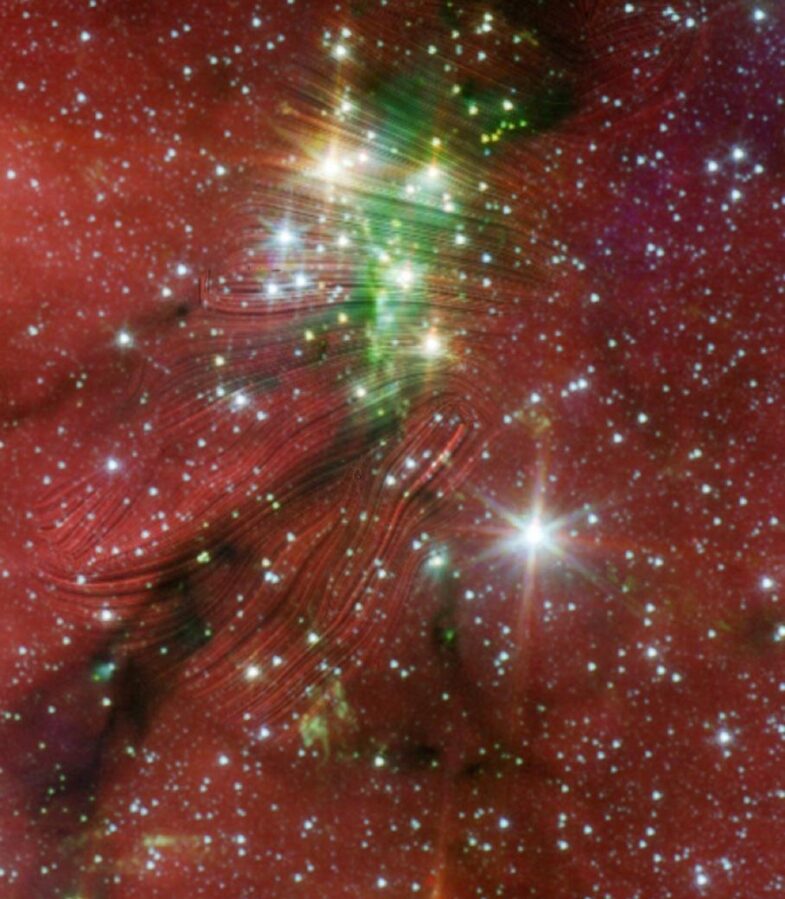
Weak magnetic fields in the Serpens South star cluster
Haystack radio astronomer Jens Kauffmann is a co-author of “Magnetized filamentary gas flows feeding the young embedded cluster in Serpens South,” published this week in Nature Astronomy (Pillai et al., https://www-nature-com.ezproxy.canberra.edu.au/articles/s41550-020-1172-6).
The team led by Thushara Pillai (Boston University, and Max-Planck-Insitut für Radioastronomie [MPIfR] in Bonn, Germany) conducted observations of dense gas around the Serpens South star cluster with the High-resolution Airborne Wideband Camera Plus (HAWC+) onboard the airborne observatory SOFIA. The Serpens South star cluster is part of a giant interstellar molecular cloud. Such clouds have been observed to be strongly magnetized, and these magnetic fields play a role in controlling the formation of stars.
“Previous observations of star-forming regions revealed that cosmic magnetic fields are strong enough to support gas clouds against collapse induced by self-gravity,” says Kauffmann. “The key feature about the new observations of the Serpens South star cluster is that we achieve high enough spatial resolution to reveal the innermost, gravitationally unstable parts of this cloud. It appears that the magnetic field has been weakened so much in these regions that it cannot prevent the collapse of gas into stars.”
Nature Astronomy has also published a News & Views feature about this work, available at https://www-nature-com.ezproxy.canberra.edu.au/articles/s41550-020-1180-6.
More information on this study is available in from the Max-Planck-Insitut für Radioastronomie (https://www.mpifr-bonn.mpg.de/pressreleases/2020/8) and NASA (https://www.nasa.gov/image-feature/magnetic-rivers-feed-young-stars).